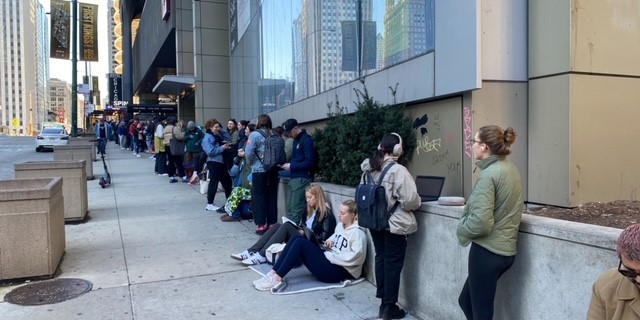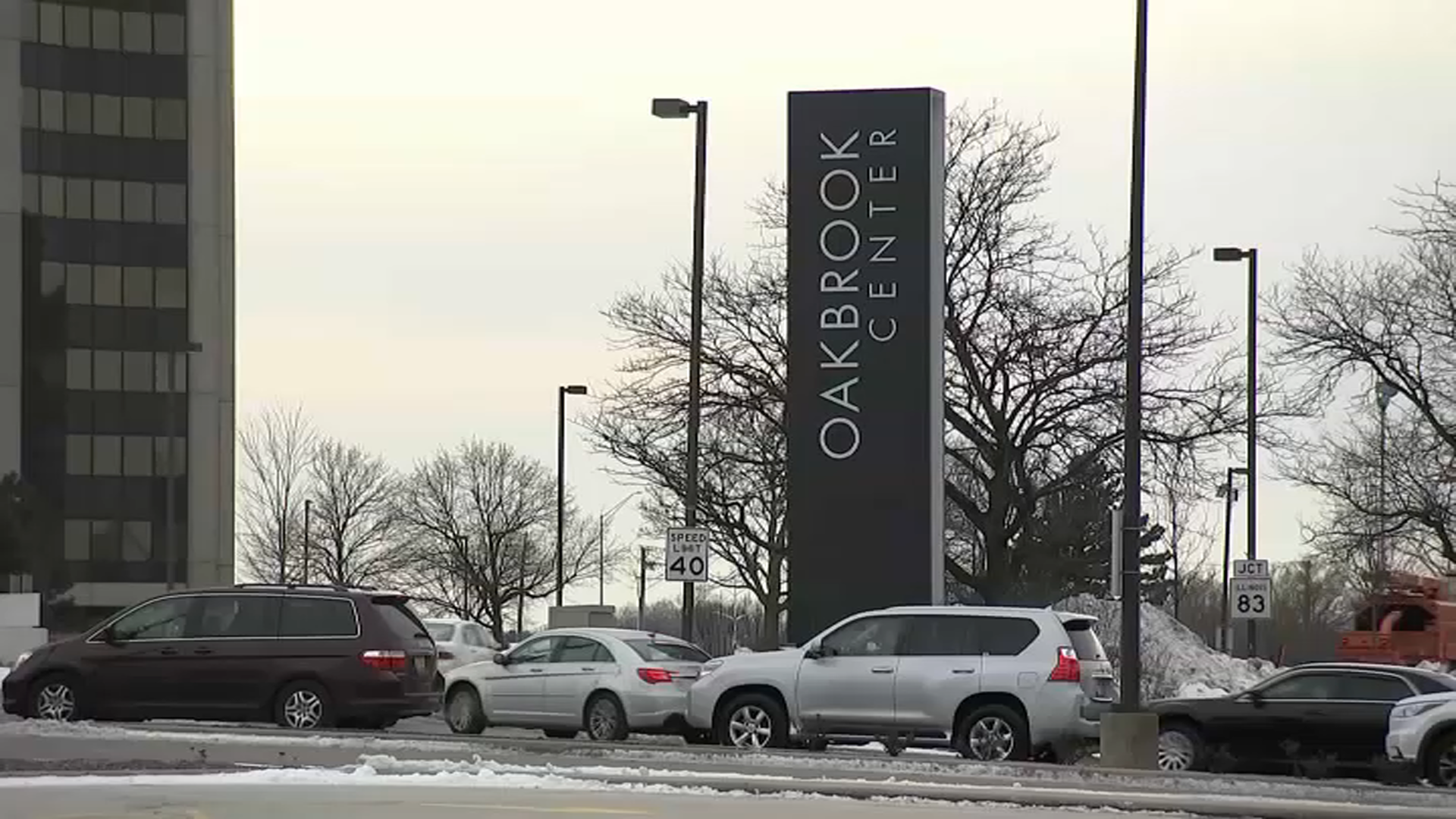Chicago's coronavirus metrics have shown "worrying increases" in recent weeks, officials said Thursday, noting that "most alarmingly," the daily number of new COVID cases in the city has risen into the "high risk" category due to five straight days of increases.
The Chicago Department of Public Health previously set four metrics to determine the city's eligibility to move forward in its reopening plan: COVID-19 cases diagnosed per day, test positivity, emergency room visits for COVID-like illness and ICU beds occupied by COVID patients.
On Thursday, city officials said all four metrics have increased in the last week, three of them "significantly."
Of those, the city said daily new COVID cases had increased "most alarmingly," now averaging 365 as of Thursday, marking a 23% increase in the past week and moving into the "high risk" level after more than five consecutive days of at least a 10% increase.
Feeling out of the loop? We'll catch you up on the Chicago news you need to know. Sign up for the weekly Chicago Catch-Up newsletter here.
Emergency room visits for COVID-like illnesses were up 38% in the last week, now averaging 73 per day and in the "moderate risk" category, while test positivity was up 18% in the last week, now averaging 3.4% and in the "lower risk" level.
ICU beds occupied by COVID patients are averaging at around 73, officials said, still in the "lower risk" category and up 3% in the last week.
“Over the last few weeks we have seen increases across our metrics, and I am concerned,” CDPH Commissioner Dr. Allison Arwady said in a statement. “Throughout the pandemic we have promoted caution as we reopen, and unfortunately this pandemic is clearly not over yet. While we have made great progress, I urge all Chicagoans to double down on the safety measures that we know work – wear a mask, keep gatherings small, and maintain social distancing.”
Local
CDPH detailed the latest metrics in announcing updated COVID regulations for Chicago businesses, expanding outdoor capacity limits while keeping indoor restrictions in place even as the rest of Illinois looks ahead to the new Bridge Phase in the coming days.
The new outdoor guidelines, increasing capacity "at certain establishments to allow for safe activities in outdoor spaces that are less conducive to virus spread," according to the city, are as follows:
- Bars and Restaurants: Maximum outdoor table size can increase to ten people, with tables set up so that patrons are six feet from patrons at other tables
- Social Events (e.g. weddings, potlucks and other community events): Total outdoor capacity can increase to the lesser of 50% or 100 people
- Performance Venues, Theaters and Seated Spectator Events: Outdoor venues with capacity greater than or equal to 200 can operate at 25% capacity. Smaller venues can operate at no more than 50% capacity or 50 people.
- Outdoor Recreation: Maximum groups of 50; multiple groups permitted
- Places of Worship: No outdoor capacity limit provided that six feet of social distancing is maintained between parties
- Health and Fitness Centers: Outdoor classes can increase to 100 people
Still, the guidelines maintain there must be 6 feet of social distancing between parties and face coverings can only be removed "in limited circumstances."
"Indoor capacity at bars, restaurants, social events, performance venues, seated spectator events, places of worship and other establishments will remain limited to the lesser of 50% capacity or 50 people per room or floor," the city said.
Mayor Lori Lightfoot said Wednesday that the city cannot continue to reopen if numbers further increase.
"We are definitely concerned," Lightfoot said. "We're not in a position, as a result of [increasing metrics], to really be talking about a more reopening issues, particularly when it comes to expanding capacity indoors. The last thing that any of us want to do is take any steps back."
The mayor added that the COVID-19 trends are currently "going in the wrong direction" and preventing Chicago from returning to normalcy.
"I was very much hoping today to be able to do some further reopening," Arwady said Tuesday. "In the setting of what these numbers look like, we're just keeping a close eye. We've got to come back down to moderate risk in all of our indicators."
During a press conference Wednesday, Lightfoot said the spike in COVID metrics resembles trends of fall 2020, and is especially concerning with most cases occurring in residents ages 18 to 39, as previously Arwady mentioned.
"It's been 18- to 29-year-olds, 30- to 39-year-olds, 40- to 49-year-olds at every point here in the outbreaks that have been the most predictive of seeing significant increases in cases," Arwady said. "And so most of those folks have not been able to get a vaccine yet and I want to remind people, all people, but especially folks in those younger age groups who haven't been able to get a vaccine that we really need everybody to not stop doing the things that got us this far."
She noted that the increases in COVID metrics, however, aren't unique to Chicago.
"These increases we're seeing are not just in Chicago," Arwady said. "They're actually worse in suburban Cook and the northeast, you know, the state overall. Not an emergency yet, but these are... this is why we monitor these things and when we see signs of concern like this, it's a moment to watch and see what happens."
Arwady noted that emerging variants of the coronavirus, believed to be more contagious, are still being reported across the city.
Most recently, on March 5, the Chicago Department of Public Health reported the city's first case of the Brazilian COVID-19 variant, which also marked the first such case in Illinois, according to health officials. Illinois reported its first case of the variant first discovered in South Africa on Feb. 11, while the U.K. strain was initially reported in Chicago on Jan. 15.
Arwady said that while the city continues to make progress in vaccinating residents, she's particularly concerned about the short-term impacts of a surge, but remains optimistic for longer-term projections.
"I remain really confident that this summer, assuming we continue to see really good vaccine demand and really good uptake as vaccine supply increases, we'll be in good shape this summer, but I am really worried about this next sort of four to eight weeks," she said.
While it remains unclear if the rising metrics will in fact mark the start of a third surge in the city, Arwady said residents should not let their guards down.
"I don't know fully what's going to happen here," Arwady said. "I do know that we are pushing vaccine absolutely as quickly as we can, ramping up our monitoring for the variants we are seeing...and continuing to ask people to do what has gotten us this far. If we see a big increase in cases not accompanied by an increase in hospitalizations or deaths I don't worry about that as much. But if we start to see it impacting in serious ways, you know, and then the big question is what does this mean for reopening?"



